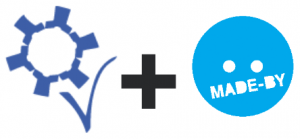 Each in their respective annual conferences, taking place on two successive days, both the RITE group as well as Made-By called the importance of traceability in the supply chain to the attention of the entire industry.
Each in their respective annual conferences, taking place on two successive days, both the RITE group as well as Made-By called the importance of traceability in the supply chain to the attention of the entire industry.
Supply chains that are as deep as they are broad, tedious supplier relationships, the habitual recursive outsourcing that takes place on all levels of supply chains – the complexity of business relationships in the textile industry is a given. But: not only is this the case in large multimillion dollar enterprises, but applies to the same extent to a small designer label with barely half a dozen suppliers.
This high-collar, long-sleeved shirt that I’m wearing today: When was or were its fibre/s produce, and where? Where was it spun and what auxiliary chemicals used in the process? The fabric? The dyes? What specific chemical products were used in the different stages of the production process, in what exact quantities, combinations, at what temperatures, and at what stage?
Many questions, few, very few answers.
The really bad news is: it is evident that the textile industry as a whole lacks the knowledge of many basic skills and insights to talk concretely and in detail about how to realize a truly sustainable product.
On the other hand, the good news is that there are people who have taken a stake. Numerous experts are working in and across the different specialists. They are passionate, intrigued by the challenges and decided to overcome the hurdles. The changes are small, yet steady and as we all know ‘constant dripping wears away the stone’.
In addition to ‘mere’ optimisation through progressive improvements and adjustments, the value of new technologies, amongst them nanotechnology, bear hope to the same extent as they are new to us. They are even sometimes taken for the panacea we are so desperately looking for. But everything, certainly new technologies, come ultimately at a cost that has to be paid somewhere within the system at large. Professor Vyvyan Howard illustrated well how little we in fact know about nano-particles overall, their interaction with Fauna and Flora in general, and us humans in particular. In other words, we take the solutions for granted without knowing as of yet the price required to pay.
Further, inter- and trans-disciplinary collaboration of specialities – much beyond the textile sector alone – encompasses a potential so far barely taken note of, let alone put into practise. Self-focused specialism and limited interaction between designers, manufacturers, buyers, sourcing agents and management accounts for many a lost opportunity for change.
It is precisely here that the RITE conference is inspiring and stands out from the crowd of workshops, conferences and seminars: much inspiration of what can be done, or how it can be differently, stems from the exchange that happens when researchers are brought together with teachers, water stewardship experts with buyers, designers with dye technology experts to just name a few arbitrary examples.
Of course, it must not be forgotten either that European legislation has been put in place, or is under discussion to come into effect, that helps to ‘motivate’ some of the more conservative and inflexible sectors of the industry. Examples are the Legal Directive 2006/121/EC also called REACH (short for Regulation, Evaluation, Authorization and Restriction of Chemical Products); or the directive that, if approved, will come into effect in 2015 and will require formalised and public reporting of companies with respect to their environmental and social impact.
At the end of both annual conferences however, it became crystal clear that without traceability, and without detailed knowledge and ownership of a company’s own supply chain, any further discussion on topics relating to the bigger picture of sustainability in the textile industry end up – with few exceptions – doomed by irrelevancy.

